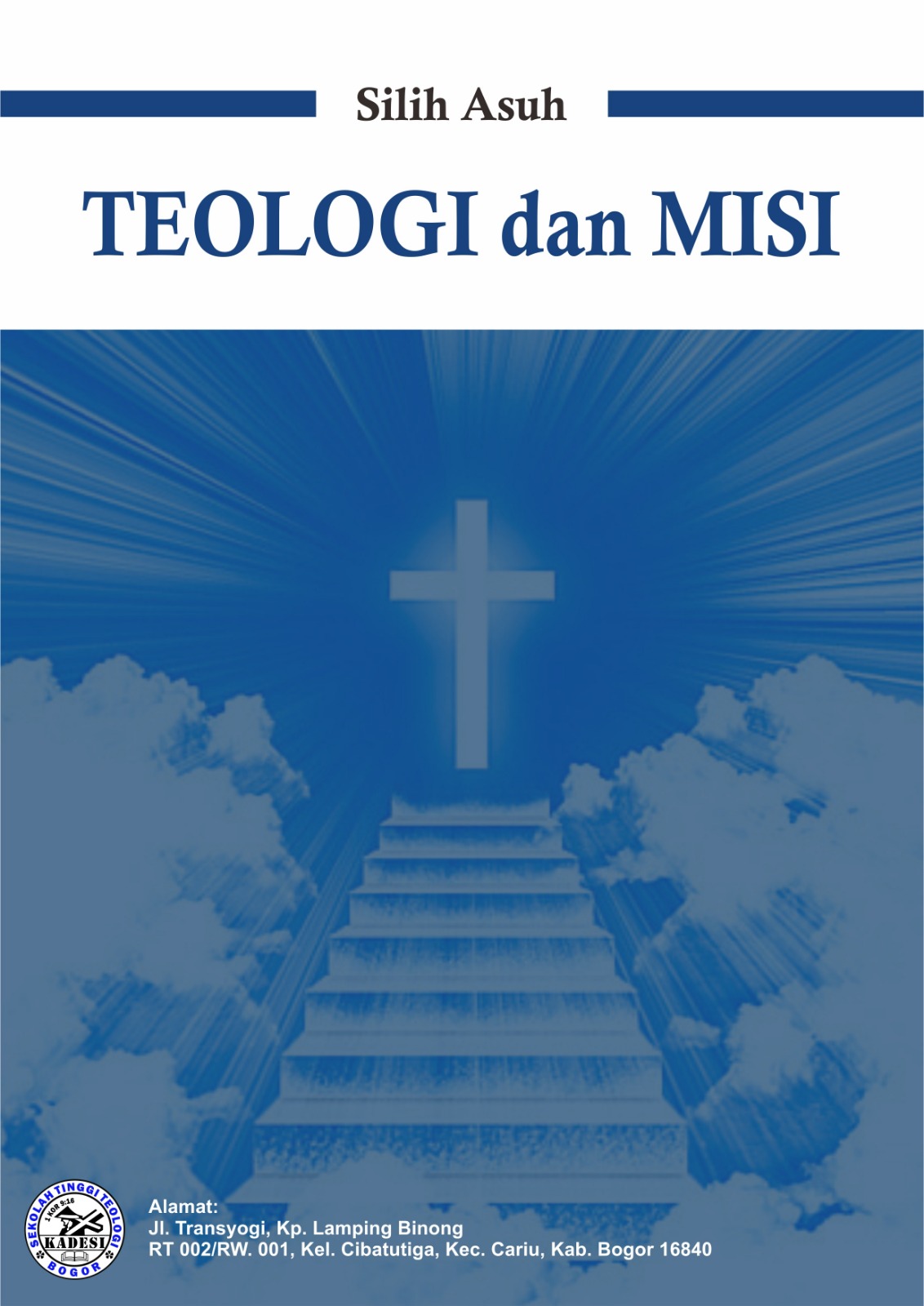Simbolisme Dan Makna Air Dalam Narasi Perjanjian Lama: Dari Penciptaan Hingga Pembebasan
DOI:
https://doi.org/10.54765/silihasuh.v2i2.103Keywords:
Simbolisme, Air, Perjanjian Lama, Penciptaan, Pembebasan, KeberlanjutanAbstract
Air memiliki peran penting dalam banyak narasi di dalam Perjanjian Lama, berfungsi sebagai simbol yang kuat dari penciptaan, pemurnian, dan pembebasan. Penelitian ini mengkaji simbolisme air yang multifaset, menjelajahi implikasi spiritual, sosial, dan ekologisnya dari kisah penciptaan hingga pembebasan bangsa Israel dari Mesir. Dengan menggunakan analisis kualitatif terhadap teks-teks alkitabiah dan interpretasi ilmiah yang relevan, penelitian ini bertujuan untuk mengungkap makna yang lebih dalam dari air dalam narasi-narasi ini dan bagaimana makna tersebut beresonansi dengan isu-isu kontemporer terkait keberlanjutan dan pengelolaan sumber daya. Temuan menunjukkan bahwa simbolisme air melampaui konteks alkitabiah, menawarkan wawasan tentang tantangan modern terkait dengan kelangkaan air dan pengelolaan lingkungan.
References
çatal, Sena, Ece Ünver Demirkıran, Çağılsu Kardeş Yağmur, Ebrike Karaca, Beyza Cabacı, and Hilal Aycı. 2025. “Water as a Sustainable Infrastructure and Cultural Symbol of City: Bächle in Freiburg Im Breisgau.” International Journal of Built Environment and Sustainability 12(1):33–45. doi: 10.11113/ijbes.v12.n1.1275.
Deming, David. 2024. “Water in the Bible The Spiritual Significance of Water.” 3538(10):1808–22.
Denysenko, Nicholas. 2017. “Death and Dying in Orthodox Liturgy.” Religions 8(2):1–13. doi: 10.3390/rel8020025.
Dwi Ari, Ismu Rini, Indradi Wijatmiko, Herry Santosa, and Gunawan Prayitno. 2024. “Empowering Smart Health Cities Through Innovative Water Management Strategies.” International Journal of Sustainable Development and Planning 19(8):2991–3005. doi: 10.18280/ijsdp.190816.
Editors, Associate, Assistant Editors, and English Language Editor. 2018. “ANGLICA An International Journal of English Studies 27/1 2018.”
GÓMEZ ARANDA, Mariano. 2018. “Aristotelian Theories in Abraham Ibn Ezra’s Commentaries to the Bible.” Mediterranea. International Journal on the Transfer of Knowledge 3(2018):35–54. doi: 10.21071/mijtk.v0i3.10769.
Goyvaerts, Samuel, and Nikolaas Vande Keere. 2020. “Funeral Rites through Adaptive Reuse of a Rural Church and Its Surroundings as a Columbarium and Urn Cemetery.” (Billiet 2017).
Hermanto Candra, Priskardus, Miftahul Hamim, and Gedong Maulana Khabir. 2024. “Water Conservation Through Local Wisdom As A Manifestation Of Social Justice And Ecological Justice.” BIO Web of Conferences 96. doi: 10.1051/bioconf/20249604007.
Kavusa, Kivatsi Jonathan. 2017. “An Eco-Theological Interpretation of Proverbs 5:15-20 in the Light of Water Crises Experienced in Present-Day Africa.” Old Testament Essays 30(3):707–24. doi: 10.17159/2312-3621/2017/v30n3a10.
Koirala, Kamal Prasad, Bidya Nath Koirala, and Gem Prasad Gurung. 2021. “Epistemological Understanding of Science Embedded within Shad Darsana and Buddhist Philosophy.” Space and Culture, India 9(2):71–80. doi: 10.20896/saci.v9i2.1137.
Kosek, Wojciech. 2008. “Introduction to Analyses This Paper Is the Translation of the Introduction of the Doctoral Dissertation : ָ ש ְ ִׁ י י ֵ נ ְ ב ־ ל ָ כ ְ ל םי ר ֻּ ִׁ מ ש ִׁ ה ָ והי ַ ל ה ֶּ ז ַ ה ה ָ ל ְ י ַ ל ַ ה ־ או ּ ה ( Ex 12 : 42 ).” 1–35.
M, Chapurukha. 2017. “Preindustrial Water Management in Eastern Africa.” Global Journal of Archaeology & Anthropology 1(2). doi: 10.19080/gjaa.2017.01.555556.
McCarroll, Meghan, and Hillary Hamann. 2020. “What We Know about Water: A Water Literacy Review.” Water (Switzerland) 12(10). doi: 10.3390/w12102803.
Mensah, Michael K. 2025. “Reimagining Ghana’s Cities: Perspectives from the Bible and African Indigenous Sacred Texts.” Theologia Viatorum 49(1):1–9. doi: 10.4102/tv.v49i1.232.
Peter Legh Allen, Nicholas. 2022. “Khirbet Qumrân: Scrolls, Sectarians, Subversives and Scepticism.” Social Sciences 11(3):162. doi: 10.11648/j.ss.20221103.15.
Pradipta, Ignga, and L. G. Saraswati Putri. 2024. “Sustainable Water Governance Based on the Local Wisdom of Tri Hita Karana and Sad Kertih Values: Impact for Environmental Sustainability.” International Journal of Environmental Impacts 7(2):181–90. doi: 10.18280/ijei.070203.
Prins, Annemiek. 2021. “Slippery Entanglements: Spiritual and Gendered Experiences of Uncertainty in the Riverine Context of Bengali Char Lands.” Religions 12(11). doi: 10.3390/rel12110906.
Santiago-Vendrell, Angel D. 2024. “Popular Catholicism Puerto Rican Style: The Virgin of Rincón, Human Agency, and Miracles.” Religions 15(4). doi: 10.3390/rel15040463.
Sarsour, Amal, and Nidhi Nagabhatla. 2022. “Options and Strategies for Planning Water and Climate Security in the Occupied Palestinian Territories.” Water (Switzerland) 14(21):1–25. doi: 10.3390/w14213418.
Sawah, Mohammad Mohannad, and Pavel Slepnev. 2023. “Challenges and Development Perspectives of Water Supply System in Syrian Governorates.” E3S Web of Conferences 460:1–8. doi: 10.1051/e3sconf/202346008016.
Sipayung, Parulihan. 2023. “A Hosah Scientific-Cultural Theology of Sacred Air.” Indonesian Journal of Theology 11(2):295–313. doi: 10.46567/ijt.v11i2.362.
Vine, Cedric E. W. 2023. “Exodus Allusions in the Midsection of the Gospel of Matthew.” Tyndale Bulletin 74:1–28. doi: 10.53751/001c.68303.
De Vries, Pieter. 2015. “The Relationship between the Glory of YHWH and the Spirit of YHWH in Ezekiel 33-48.” Old Testament Essays 28(2):336–50. doi: 10.17159/2312-3621/2015/v28n2a7.
Downloads
Published
How to Cite
Issue
Section
License
Copyright (c) 2025 Jurnal Silih Asuh : Teologi dan Misi

This work is licensed under a Creative Commons Attribution-ShareAlike 4.0 International License.













